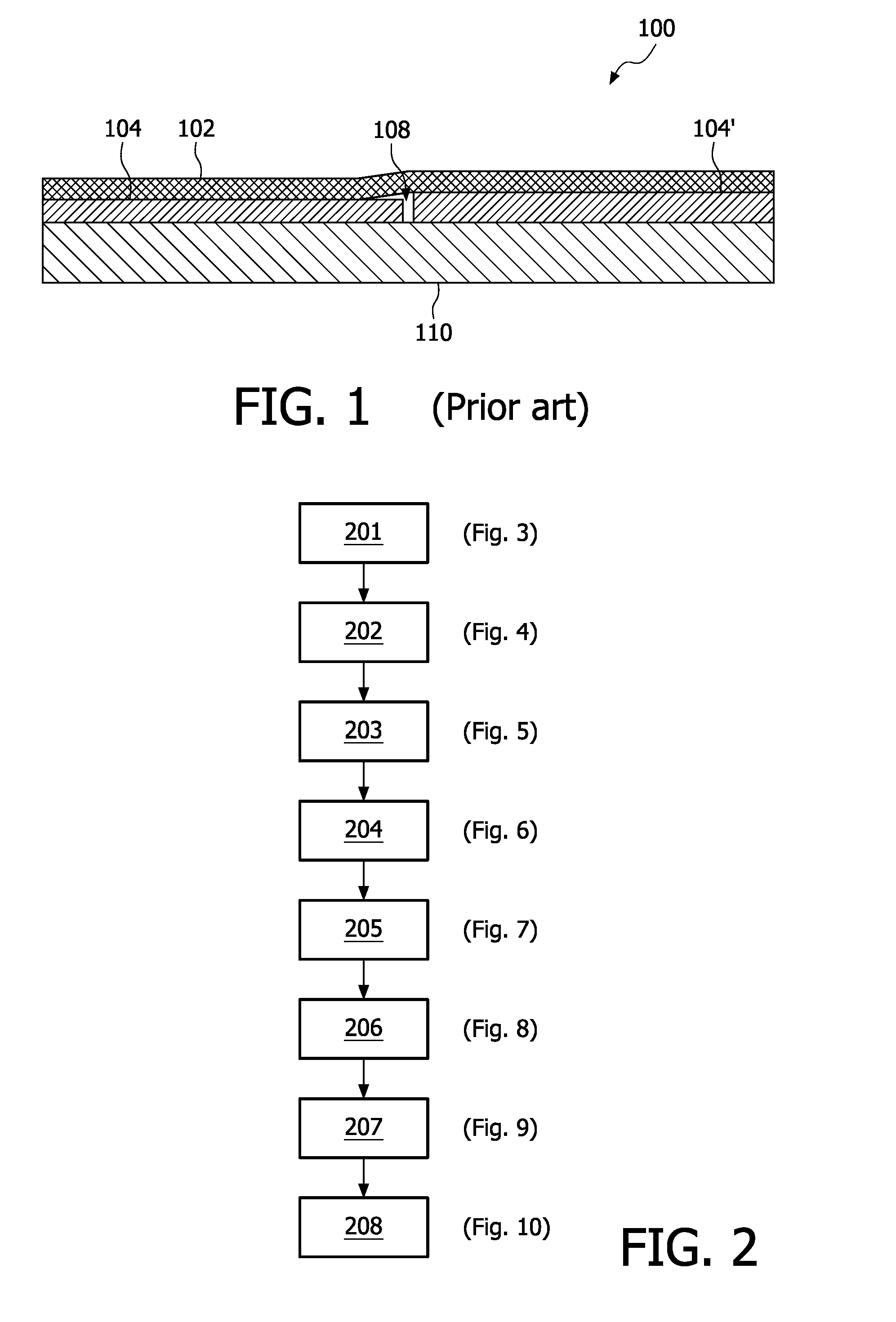Assembly method for a tiled radiation detector
- Summary
- Abstract
- Description
- Claims
- Application Information
AI Technical Summary
Benefits of technology
Problems solved by technology
Method used
Image
Examples
Embodiment Construction
[0066]According to FIG. 1, a flat tiled detector assembly 100 based on indirect conversion is shown, wherein a scintillator 102 is coupled to a readout panel composed of one or more detector tiles 104, 104′ arranged on to a substrate layer 110. The scintillator 102 can be either directly deposited onto the readout panel or first deposited onto a substrate (not shown here) which is then coupled to the readout panel, e.g. with an optical glue or gel. The optical and mechanical properties of this coupling layer have a big impact on image quality (IQ). Hence, misalignment in all three directions x, y, z among detector tiles 104 in a tiled detector assembly 100 results in image artifacts. Z-misalignment results in altimetry differences between detector tiles. This may introduce voids 108 or air bubbles in the coupling layer where the detector tiles 104, 104′ join. Such imperfections affect the local pixel sensitivities of each detector tile, thus leading to image artifacts.
[0067]Accordin...
PUM
| Property | Measurement | Unit |
|---|---|---|
| Length | aaaaa | aaaaa |
| Length | aaaaa | aaaaa |
| Width | aaaaa | aaaaa |
Abstract
Description
Claims
Application Information
 Login to View More
Login to View More - R&D
- Intellectual Property
- Life Sciences
- Materials
- Tech Scout
- Unparalleled Data Quality
- Higher Quality Content
- 60% Fewer Hallucinations
Browse by: Latest US Patents, China's latest patents, Technical Efficacy Thesaurus, Application Domain, Technology Topic, Popular Technical Reports.
© 2025 PatSnap. All rights reserved.Legal|Privacy policy|Modern Slavery Act Transparency Statement|Sitemap|About US| Contact US: help@patsnap.com



